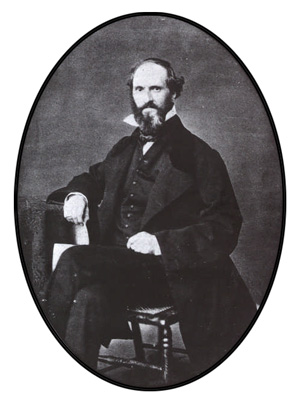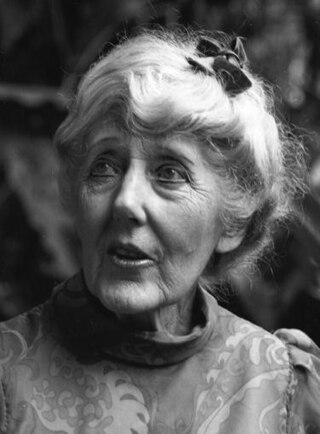Related Research Articles

Royal Botanic Gardens, Kew is a non-departmental public body in the United Kingdom sponsored by the Department for Environment, Food and Rural Affairs. An internationally important botanical research and education institution, it employs 1,100 staff. Its board of trustees is chaired by Dame Amelia Fawcett.

Richard Spruce was an English botanist specializing in bryology. One of the great Victorian botanical explorers, Spruce spent 15 years exploring the Amazon from the Andes to its mouth, and was one of the first Europeans to visit many of the places where he collected specimens. Spruce discovered and named a number of new plant species, and corresponded with some of the leading botanists of the nineteenth century.

The Lecythidaceae comprise a family of about 20 genera and 250–300 species of woody plants native to tropical South America, Africa, Asia and Australia.

William Thomas Stearn was a British botanist. Born in Cambridge in 1911, he was largely self-educated and developed an early interest in books and natural history. His initial work experience was at a Cambridge bookshop, but he also had an occupation as an assistant in the university botany department. At the age of 29, he married Eldwyth Ruth Alford, who later became his collaborator.

Margaret Ursula Mee, MBE was a British botanical artist who specialised in plants from the Brazilian Amazon Rainforest. She was also one of the first environmentalists to draw attention to the impact of large-scale mining and deforestation on the Amazon Basin.

Gustavia is a genus of flowering plants in the family Lecythidaceae described by Linnaeus in 1775. It is native to tropical Central America and South America. Many of the species are threatened; some are critically endangered Gustavia superba, though, is actually abundant in re-growing secondary forests. It grows in northern South America, from Panama south through the Andes as far as Ecuador, and along the Caribbean coast and in the Amazon basin. Gustavia flowers have numerous stamens, in some species as many as 1,200 in a single flower.

Parinari is a genus of plant in the family Chrysobalanaceae.

Roupala is a Neotropical genus of woody shrubs and trees in the plant family Proteaceae. Its 34 species are generally found in forests from sea level to 4000 m altitude from Mexico to Argentina.
Mark Wayne Chase is a US-born British botanist. He is noted for work in plant classification and evolution, and one of the instigators of the Angiosperm Phylogeny Group-classification for flowering plants which is partly based on DNA studies. In particular he has researched orchids, and currently investigates ploidy and hybridization in Nicotiana.
Frank Nigel Hepper FLS FIBiol was an English botanist, best known for his work as editor of The Flora of West Tropical Africa.
This is a list of Directors of the Royal Botanic Gardens, Kew:

The Society for Ethnobotany is an international learned society covering the fields of ethnobotany and economic botany. It was established in 1959. In 2022 the Society voted to change its name from the Society for Economic Botany to the Society for Ethnobotany, going into effect in June 2023. Its official journal is Economic Botany, published on their behalf by Springer Science+Business Media and the New York Botanical Garden Press. The society also publishes a biannual newsletter, Plants and People. The society organizes annual meetings at different locations around the world, where it awards the prize of Distinguished Ethnobotanist to particularly meritorious individuals.
Jan Salick is an American botanist who researches the interaction between humans and plants (ethnobotany) and conservation biology. Her specialisms include alpine environments, climate change, indigenous peoples and traditional knowledge. She is a past-president of the Society for Economic Botany and holds their Distinguished Economic Botanist award. She is also Fellow of the American Association for the Advancement of Science and received the Fairchild Medal for Plant Exploration. In 2019 she retired as Senior Curator of Ethnobotany at the Missouri Botanical Garden, and now has emerita status.
Brian Morey Boom is an American botanist who specializes in the flora of the Guianas and the Caribbean, the family Rubiaceae, ethnobotany, and economic botany.

Scott Alan Mori was a swiss and american botanist and plant collector. He specialized in the systematics and ecology of neotropical Lecythidaceae and Amazonian and Guianian floristics.

Michael Jeffrey Balick is an American ethnobotanist, economic botanist, and pharmacognosist, known as a leading expert on medicinal and toxic plants, biocultural conservation and the plant family Arecaceae (palms).
Grenville 'Gren' Llewellyn Lucas was a British botanist, conservationist, and Keeper of the Herbarium and Library at Kew Gardens.
Pranceacanthus is a monotypic genus of flowering plants belonging to the family Acanthaceae. It only contains one known species, Pranceacanthus coccineusWassh.

Maria Sergeevna Vorontsova is a Russian-born botanist, specializing in the taxonomy of Poaceae (grasses). She was responsible for authoring the taxon for Solanum agnewiorum and Solanum umtuma. She is a member of the Accelerated Taxonomy department at Royal Botanic Gardens, Kew. She is one of the co-authors and maintainers of GrassBase, and is an editor of the journal, Phytotaxa.
David Gamman Frodin was an American botanist, known as a leading expert on the flora of Papua New Guinea.
References
- 1 2 3 4 5 6 Sinon, Stephen (August 2000). "Records of the Herbarium (RG4) GHILLEAN T. PRANCE RECORDS (1963–1988)". Archives and Manuscript Collections. New York Botanical Garden . Retrieved 25 February 2014.
- 1 2 3 4 5 "Ghillean Prance (1937–)". Kew, History & Heritage. Royal Botanic Gardens, Kew. Archived from the original on 12 February 2013. Retrieved 25 February 2014.
- 1 2 Langmead, Clive (2001). A Passion for Plants: Life and Vision of Ghillean Prance, Director of Kew Gardens. Kew: Royal Botanic Gardens. ISBN 1-900347-76-8.
- ↑ Bebber, D. P.; Carine, M. A.; Wood, J. R. I.; Wortley, A. H.; Harris, D. J.; Prance, G. T.; Davidse, G.; Paige, J.; Pennington, T. D.; Robson, N. K. B.; Scotland, R. W. (2010). "Herbaria are a major frontier for species discovery". Proceedings of the National Academy of Sciences. 107 (51): 22169–22171. Bibcode:2010PNAS..10722169B. doi: 10.1073/pnas.1011841108 . PMC 3009773 . PMID 21135225.
- ↑ Prance, G. T. (2002). "Species survival and carbon retention in commercially exploited tropical rainforest". Philosophical Transactions of the Royal Society A: Mathematical, Physical and Engineering Sciences. 360 (1797): 1777–1785. Bibcode:2002RSPTA.360.1777P. doi:10.1098/rsta.2002.1041. PMID 12460497. S2CID 23286528.
- ↑ Brown, S.; Swingland, I. R.; Hanbury-Tenison, R.; Prance, G. T.; Myers, N. (2002). "Changes in the use and management of forests for abating carbon emissions: Issues and challenges under the Kyoto Protocol". Philosophical Transactions of the Royal Society A: Mathematical, Physical and Engineering Sciences. 360 (1797): 1593–1605. Bibcode:2002RSPTA.360.1593B. doi:10.1098/rsta.2002.1021. PMID 12460486. S2CID 2549023.
- ↑ Prance, G. T. (2000). "Ethnobotany and the future of conservation". Biologist (London, England). 47 (2): 65–68. PMID 11190230.
- ↑ Prance, G. (1999). "The poisons and narcotics of the Amazonian Indians". Journal of the Royal College of Physicians of London. 33 (4): 368–376. PMC 9665745 . PMID 10472027.
- ↑ Morton, C.; Mori, S.; Prance, G.; Karol, K.; Chase, M. (1997). "Phylogenetic relationships of Lecythidaceae: A cladistic analysis using rbcL sequence and morphological data". American Journal of Botany. 84 (4): 530–540. doi:10.2307/2446029. JSTOR 2446029. PMID 21708605.
- ↑ Dalton, H.; Goodwin, B.; Ho, M. W.; McGlade, J.; Prance, G.; Saunders, P.; Sherratt, D.; Smith, J. M.; Whittenbury, R. (1997). "Patent threat to research". Nature. 385 (6618): 672. Bibcode:1997Natur.385..672D. doi: 10.1038/385672a0 . PMID 9034179.
- ↑ Prance, G. T. (1991). "What is ethnobotany today?". Journal of Ethnopharmacology. 32 (1–3): 209–216. doi:10.1016/0378-8741(91)90120-3. PMID 1881159.
- ↑ Prance, G. T. (1982). "Threatened Plants". Science. 216 (4549): 977–978. Bibcode:1982Sci...216..977S. doi:10.1126/science.216.4549.977. PMID 17809062.
- ↑ Mori, S. A.; Orchard, J. E.; Prance, G. T. (1980). "Intrafloral Pollen Differentiation in the New World Lecythidaceae, Subfamily Lecythidoideae". Science. 209 (4454): 400–403. Bibcode:1980Sci...209..400M. doi:10.1126/science.209.4454.400. PMID 17747812. S2CID 20448653.
- ↑ Fidalgo, O.; Prance, G. T. (1976). "The ethnomycology of the Sanama Indians". Mycologia. 68 (1): 201–210. doi:10.2307/3758915. JSTOR 3758915. PMID 934181.
- ↑ Prance, G. T. (1973). "The mycological diet of the Yanomam Indians". Mycologia. 65 (1): 248–250. doi:10.2307/3757814. JSTOR 3757814. PMID 4734424.
- ↑ Prance, Anne E.; Sandved, Kjell Bloch; Prance, Ghillean T. (1993). Bark: the formation, characteristics, and uses of bark around the world. Portland, Or: Timber Press. ISBN 0-88192-262-5.
- ↑ Sandved, Kjell Bloch; Prance, Ghillean T. (1985). Leaves, the formation, characteristics, and uses of hundreds of leaves found in all parts of the world. [New York]: Crown. ISBN 0-517-55152-7.
- 1 2 3 "Professor Sir Ghillean Prance". Trustees. Amazon Charitable Trust. Archived from the original on 1 March 2014. Retrieved 25 February 2014.
- ↑ "História do PPG-Ecologia do INPA". ppginpa.eco.br. Instituto Nacional de Pesquisas da Amazônia. December 2016. Retrieved 23 August 2018.
- ↑ "International Trustees". A Rocha. Archived from the original on 3 March 2013. Retrieved 17 March 2013.
- ↑ "Presidents". Christians in Science. Retrieved 17 March 2013.
- ↑ "Nature in Art Trust". Nature in Art Trust. Archived from the original on 9 May 2010. Retrieved 23 March 2010.
- ↑ Marren, Peter (23 August 2010). "Wild Flower Society: Floral fixation". The Independent on Sunday. Retrieved 25 March 2021.
- ↑ The Wild Flower Society website
- ↑ "List of Past Gold Medal Winners" (PDF). Royal Geographical Society. Archived from the original (PDF) on 27 September 2011. Retrieved 24 August 2015.
- ↑ "Decorations for two worthy recipients celebrated at the Embassy". uk.emb-japan.go.jp. Embassy of Japan in the UK. December 2012. Retrieved 7 June 2017.
- ↑ "Sir Ghillean Tolmie Prance (1937–), Director of the Royal Botanic Gardens". Collections. National Portrait Gallery, London . Retrieved 25 February 2014.
- ↑ "Pranceacanthus Wassh. | Plants of the World Online | Kew Science". Plants of the World Online. Retrieved 20 May 2021.
- ↑ International Plant Names Index. Prance.